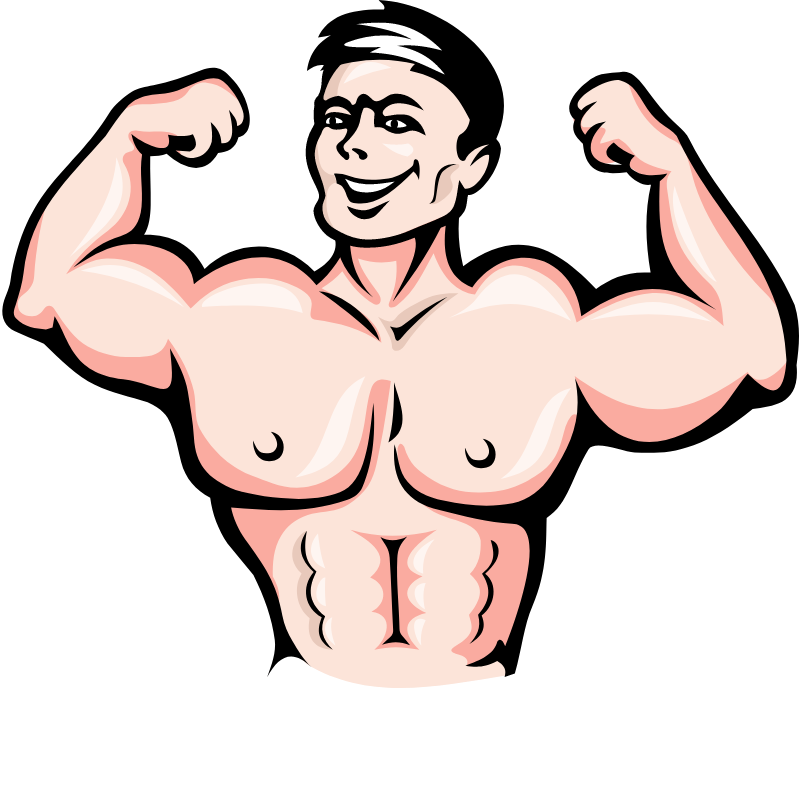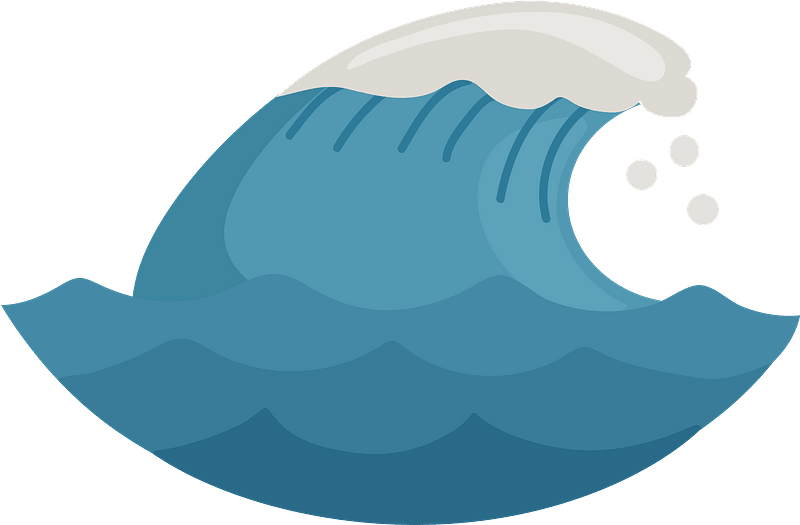What Muscles Are Used For Swimming? A Complete Guide.

By Maria Rezhylo
3x World record holder in swimming & swim school owner
Feb. 9, 2023
Feb. 9, 2023
We often hear that swimming is a whole-body workout. But what does it actually mean?
If you are looking for answers, this guide is for you.
You'll learn:
If you are looking to get fit by swimming, this guide is for you. Learn everything about swimming muscles with me.
Let's dive in!
If you are looking for answers, this guide is for you.
You'll learn:
- All the muscles used in different swimming strokes
- Why swimming is a full-body workout
- Can you build muscle by swimming
- And more
If you are looking to get fit by swimming, this guide is for you. Learn everything about swimming muscles with me.
Let's dive in!
What muscles are used for swimming?
When you swim, you engage different muscle groups, both upper and lower body, to create propulsion and move through the water. The primary muscle groups in all swimming strokes are the pectoralis major, deltoids, triceps, latissimus dorsi, trapezius, abs, obliques, and hip muscles. No matter what swimming stroke you're swimming, the following muscles will be responsible for creating propulsion while maintaining a streamlined body position in the water.

Leg muscles driven stroke
The swimming stroke that requires the most output from the legs is the breaststroke. In breaststroke, the kick is the largest and longest propulsive force. It's a unique stroke involving a rhythmic and sweeping motion of the legs, often referred to as a frog kick or whip kick. Muscles such as the quadriceps, hamstrings, and gluteus maximus generate power and propel you through the water.

Breaststroke & leg muscles
The breaststroke kick requires significant work from the quadriceps, hamstrings, and gluteus maximus. Additionally, breaststroke relies heavily on the foot muscles, such as the gastrocnemius, soleus, and tibialis posterior. These muscle groups work together to produce the sweeping motion of the legs. The hip flexors are also engaged during the breaststroke kick, supporting a streamlined body position to maximize distance per stroke.
Other muscle groups in breaststroke
The breaststroke kick requires significant work from the quadriceps, hamstrings, and gluteus maximus. Additionally, breaststroke relies heavily on the foot muscles, such as the gastrocnemius, soleus, and tibialis posterior. These muscle groups work together to produce the sweeping motion of the legs. The hip flexors are also engaged during the breaststroke kick, supporting a streamlined body position to maximize distance per stroke.
Additional arms muscle groups used in breaststroke pull are:
1
Biceps brachii
2
Triceps brachii
3
Biceps femoris
4
Brachialis
5
Brachioradialis
6
Deltoids
Back muscles used in swimming breaststroke:
Chest muscles work hand-in-hand with back muscles to generate a powerful pull.
1
Latissimus dorsi
2
Levator scapulae
3
Rhomboides minor
4
Rhomboides major
Leg muscles in other swimming styles
It's true that compared to the other four strokes, the breaststroke requires greater output from the legs and lower body. However, you can't disregard that all swimming strokes engage leg muscle groups for body stability and propulsion purposes. Recent research suggests that kicking alone is responsible for 10-15% of the swimming speed. Thus, maximum speed and efficiency in all four strokes are only possible with a power output from the legs.
Freestyle-specific muscle groups
The freestyle (known as a front crawl) is the most upper body muscles driven swim stroke. Freestyle is the fastest, most efficient of all the swim strokes, and the upper body muscles generate the most propulsion. Research indicates that the main muscles that play a role in moving forward motion are the pectoralis major and latissimus dorsi muscle.

Upper body muscles used in freestyle
In front crawl, arms, and shoulder muscles perform circular movements, pulling the swimmer forward through the water. The pectoral muscles, deltoids, and triceps work together to generate power and drive the arms through the water. The back and neck muscles, such as the latissimus dorsi muscles and trapezius, are responsible for good body position, alignment, and propulsion.
Lower body muscles in freestyle
While freestyle is a highly shoulder-driven stroke, numerous different muscle groups play a role in efficient freestyle swimming. And the lower body is a big one.
Important functions they do:
Important functions they do:
- The strong core connects lower and upper body muscles to work together;
- Core muscles (abs, hips, lower back) are responsible for rotation and breathing;
- Hip muscles control a streamlined body position and prevent you from sinking in the water;
- Foot muscles, hips, hamstrings, and quadriceps generate force by kicking and pushing off the walls.
Back crawl swimming muscles
Similarly to freestyle, backstroke (or back crawl) is driven by deltoid and shoulder muscles. But there's more to it.
Unlike other swimming stroke techniques, backstroke relies heavily on the strength of your core to rotate and keep you high in the water. Additionally, in comparison to freestyle, backstroke's stroke rate has its limit; thus, a stronger flutter kick is required to maximize speed.
Unlike other swimming stroke techniques, backstroke relies heavily on the strength of your core to rotate and keep you high in the water. Additionally, in comparison to freestyle, backstroke's stroke rate has its limit; thus, a stronger flutter kick is required to maximize speed.

Different muscles and their function in back crawl:
1
Core
Abs, hips, and lower back are responsible for connection and rotation.
2
Back muscles
The main propulsive force of the backstroke is the latissimus dorsi which applies force when pulling.
3
Arm muscles & chest
Pecs, deltoids, biceps, triceps, and forearm muscles assist in pulling.
4
Legs
The hamstrings, quadriceps, and muscles generate a propulsive force by kicking.
Butterfly swimming muscles
Despite different stroke techniques, the butterfly uses the same muscle as freestyle and backstroke to keep you moving forward. Still, it's one of the hardest strokes due to its mechanics. So, if you are searching for a good full-body workout, there's no better stroke than butterfly.

Here's an anatomic breakdown of butterfly:
1
Chest
The primary muscles used in the butterfly stroke are the pectoralis major and minor, which are responsible for pulling the arms together in front of the body.
2
Back
The latissimus dorsi, or "lats," are also involved in the butterfly stroke, as they help extend the arms and drive them back towards the hips.
3
Arms
The biceps, triceps, and forearms are used to push the water behind the swimmer, as well as to provide stability and control during the recovery phase of the stroke.
4
Legs
Your hips, quads, hamstrings, and calf muscles drive the legs up and down in a whip-like motion, providing propulsion and power to the stroke.
Can you build muscle by swimming?
By involving various small and large muscles, swimming is considered a full-body workout. No matter what stroke you are swimming, you'll simultaneously get multiple muscles fired up and build an athletic figure over time.
However, it's important to note that not every swimming workout is built the same. That's why every swimmer has a different body composition. Sprints have more muscle mass, while long-distance swimmers are leaner due to the nature of the event and their work at the pool.
However, it's important to note that not every swimming workout is built the same. That's why every swimmer has a different body composition. Sprints have more muscle mass, while long-distance swimmers are leaner due to the nature of the event and their work at the pool.

Here's how to maximize your gains:
1
Incorporate strength training
By doing simple exercises like pull-ups, bench press, and squats, you'll be able to build more muscle mass. The best of it: you'll prevent many injuries from happening and transition additional power to the pool.
2
Build muscle with resistance training
Adding tools like paddles, fins, and swimming with stretch cords engages short-twitch muscles better than plain swimming laps.
3
Rest more, swim lessms
Funny enough, all the muscle growth happens when we rest. And because swimming is an intense exercise, you'll need lots of rest.
4
Mix up different speeds
Your focus shouldn't be swimming as much as you can. Instead, you should focus on incorporating more short sprints with long rest. That will fire up your short-twitch muscles and promote muscle growth.
5
Eat, well
Make sure you're fueling your body the right way. Exercise is a big stress for your muscles, and high-quality food is an excellent way to replenish your muscles after stress.
Now it's your turn!
Have you tried swimming to build muscle?
Have you noticed any significant changes?
Let me know in the comments below!
Have you noticed any significant changes?
Let me know in the comments below!
Sign up for our newsletter
Get all the essential news about the world of aquatics
